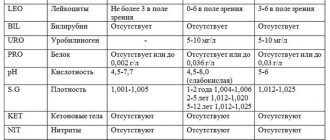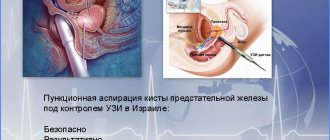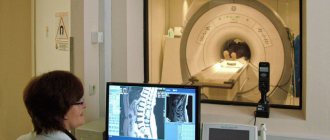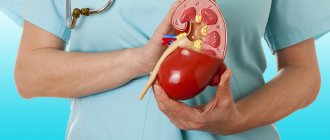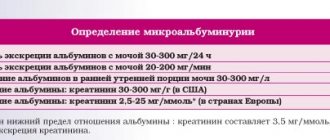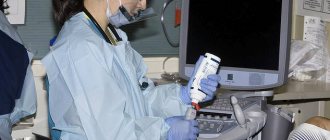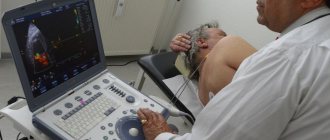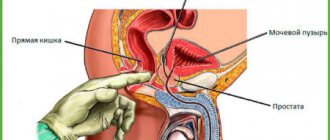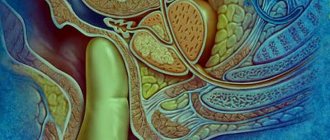Prostatitis is a serious male disease that, if left untreated, leads to complications such as:
- impotence;
- infertility;
- serious mental disorders;
- the appearance of malignant neoplasms.
It is necessary to regularly check the prostate and monitor the condition of the genitourinary system. It is this aspect of maintaining men's health that we will consider in the article. You will learn:
- who needs to see a urologist for preventive purposes;
- what symptoms indicate the need to see a specialist as quickly as possible;
- what questions the doctor will ask;
- how specialists check the prostate in men for inflammation;
- what diagnostic methods are used;
- Do you need to prepare for an initial appointment with a urologist?
- How to diagnose the prostate yourself at home.
When should you have your prostate checked?
It is recommended for all men over 40 years old to visit urologists for prostate examinations for preventive purposes. It is advisable to do this once a year. Patients in the following groups are more often recommended to undergo preventive prostate examinations.
- Men over 50 years old.
- People suffering from obesity.
- Patients whose relatives (fathers, brothers and sons) were diagnosed with urological diseases.
- Men who have suffered from diseases of the genitourinary system.
In addition, it is necessary to undergo prostate examinations more often when taking medications that have a negative effect on the functioning of the pelvic organs.
A prostate examination should be performed as soon as possible if symptoms of inflammation of the gland are detected.
- Increased body temperature.
- Frequent urge to urinate (especially at night).
- Difficulty emptying the bladder.
- Pain when urinating.
- Erectile dysfunction.
- Discomfort during sexual intercourse.
- Painful ejaculation.
- Foreign discharge from the urethra.
- Weakness and general malaise.
What functions does prostate secretion perform?
Prostate secretion creates a neutral nutrient medium in the urethra, without which sperm would quickly die. Another function of the juice is to make the sperm liquid, which allows it to be quickly transported to the exit. No less significant is the antimicrobial activity of prostate secretions, which helps protect sperm from infectious agents. Based on the functions of the juice, it is easy to understand that if there are deviations in its composition, men have problems with conception. The causes may be various diseases, which can be identified by analyzing prostate secretions.
Primary examination of the prostate at an appointment with a urologist
Diagnosis of prostate diseases in men begins with a medical history. Here is a sample list of questions the doctor will ask.
- How long ago did the symptoms appear?
- Is there pain and where is it located?
- How difficult is urination?
- Do you have problems with potency?
- Where do you work?
- What kind of sex life do you lead?
- Have you had problems with the genitourinary system before?
- Do you have any previous illnesses?
- What kind of lifestyle do you lead?
All this is needed to build a preliminary clinical picture. Therefore, do not distort the information and answer in as much detail as possible.
The next stage of diagnostics of the genitourinary system is a digital rectal examination of the prostate. It goes like this.
- The doctor washes his hands, puts on gloves and lubricates the index finger with medical gel lubricant.
- The doctor will ask you to lie on the couch and take a knee-elbow position or turn on your side.
- The specialist inserts a finger into the rectum and feels the prostate for abnormalities.
- A small amount of prostate secretion is collected for laboratory testing.
In normal condition, everything looks like this.
- Prostate size is 27–43 mm.
- The volume of the gland is 19.6–23 cm3.
- There are no seals.
- The prostate secretion released during palpation has no foreign odors.
- The organ is moderately dense.
- The lobules of the gland are the same size.
- The contours are clear.
- Mobility is present.
If abnormalities are detected, the doctor will give you directions for basic diagnostic procedures to accurately identify the etiology, form and stage of the disease.
Important! You need to prepare for your initial visit to the urologist.
- The day before your appointment, avoid sex and masturbation.
- On the eve of the examination, do a cleansing enema.
Indications
Checking the prostate gland through the rectum today is prescribed to all representatives of the stronger sex who have reached puberty. The examination is carried out regularly once a year. Some patients need to be examined by a urologist more often, especially if a man is at risk of problems or pathologies in the prostate gland:
- If a man has crossed the age of 50.
- If a malignant prostate tumor was diagnosed in first-degree relatives - father, brother or son.
- If the man is of the Negroid race and is over 45 years old.
- If a man smokes and abuses alcohol.
- If he is overweight.
- He has already suffered from genitourinary diseases and needs to be examined systematically;
- He does not have a permanent partner, he has sex irregularly, which is why the secretion stagnates, or the man practices interrupted coitus without releasing ejaculate.
- He is being treated with potent drugs that negatively affect the functioning of the male genital organs.
- If a man has already had complaints about the health and functioning of the prostate gland: the temperature has risen, unpleasant or painful sensations have been observed in the pubic area, scrotum, there have been or are problems with urination, urge, a feeling of incomplete excretion of urine, malaise, blood in the urine, a burning sensation and etc.
Basic set of analyzes
A complete urological examination for suspected prostatitis usually includes:
- examination of prostate secretions;
- urine tests (regular and bacterial);
- general and biochemical blood tests;
- examination of a smear from the urethra.
Examination of prostate secretions
Diagnosis of the prostate involves studying its secretions in the laboratory under a microscope. The study determines:
- the nature of the microflora;
- number of lecithin grains;
- number of leukocytes.
An increased amount of the latter indicates inflammation. If there are bacteria in the secretion, the disease is infectious in nature.
We talked above about preparing for taking prostate secretions for examination at an initial appointment with a urologist.
General and bacterial urine tests
A general urine test is prescribed to determine:
- the presence of foreign secretions;
- leukocyte count;
- the nature of pathogenic microflora;
- erythrocyte sedimentation rate.
A bacterial urine test is aimed at determining the type of microorganisms causing the infection.
General and biochemical blood tests
The first type of diagnostic procedure provides general information about the patient's health. Biochemical analysis is aimed at assessing the condition of organs, disturbances in the functioning of which can provoke prostatitis.
ORDER
Urethral smear examination
Prescribed for suspected presence of pathologies and diseases such as:
- urethritis;
- chlamydia;
- gonorrhea;
- ureaplasmosis.
Additional types of prostate diagnostics that a urologist can prescribe
Additional diagnostic procedures aimed at assessing the condition of the prostate are usually prescribed in the following cases.
- There is not enough information to make an accurate diagnosis.
- Treatment of the disease does not bring results.
- There are suspicions of oncology and pathologies associated with prostatitis.
We list additional types of prostate diagnostics.
Transrectal ultrasound of the prostate
This is a very informative diagnostic procedure. In addition to prostatitis, it detects cysts, adenoma, and the presence of malignant neoplasms.
Transrectal ultrasound involves inserting an ultrasound probe into the rectum 5–7 cm. If you want to examine the seminal vesicles, the device is inserted a little deeper (7–9 cm). The duration of an ultrasound examination of the prostate usually does not exceed 15 minutes.
Transrectal ultrasound of the prostate requires preparation.
- A week before the procedure, eliminate foods that increase gas formation from your diet.
- Do not eat after 6:00 pm the day before the examination.
- Before the procedure, cleanse the intestines using an enema or other methods.
- An hour before the examination, drink 1 liter of water.
Usually, transrectal ultrasound examination of the prostate is sufficient to obtain the necessary information. Other additional diagnostic procedures are prescribed much less frequently.
Prostatography
This is an x-ray of the gland using a contrast agent. The procedure is suitable for diagnosing prostatitis and prostate adenoma. Prostatography is prescribed when it is necessary to urgently obtain accurate data on the condition of the organ. This examination does not require any prior preparation. You just need to empty your bladder before the procedure.
It is carried out like this.
- A contrast agent is injected into the bladder (in some cases, directly into the gland).
- The doctor waits a few minutes. During this time, the contrast agent enters the blood and is distributed throughout the body.
- The specialist takes an x-ray in two projections (on the back and side).
After receiving the images, the doctor examines them and draws up a conclusion.
CT scan
It is prescribed if there is a suspicion that the prostate gland is filled with pus. In this case, it is necessary to urgently prescribe treatment. Computed tomography allows you to determine the direction of growth of the purulent sac for timely removal.
Prostate Health Index Determination
Involves taking blood for further laboratory testing. Detects all forms of prostatitis, as well as the presence of benign and malignant tumors. This is the most modern diagnostic method, allowing in 26% of cases to eliminate the need for a biopsy fraught with complications.
Find out more about the Prostate Health Index here.
Other methods for examining the prostate gland
In addition to the digital rectal examination, the first and most popular research method, prostate problems can also be detected using:
- Laboratory methods - by taking a blood test. Such a study shows the concentration of sex hormones, the activity of acid phosphatase, etc.;
- Ultrasound – it can determine the size and shape of the prostate; Ultrasound helps identify diseases such as prostatitis, prostate adenoma, malignant or benign tumors;
- Vesiculography is an X-ray examination of the seminal vesicles. This research method is prescribed to determine malignant cells both in the seminal vesicles and in the prostate. Such a study is prescribed by a surgeon to decide on an operation to remove the prostate in order to avoid the germination of cancer cells into the seminal vesicles;
- Prostate biopsy – prescribed if prostate cancer is suspected;
- Radioisotope research method - determines the presence of prostate tumors, and is also used to monitor the effectiveness of treatment of benign tumors, etc.
How to check your prostate yourself at home?
Doctors do not recommend self-diagnosis, but you can check the prostate gland yourself at home.
First of all, you need to prepare for the procedure. For this:
- empty your bowels naturally or give an enema;
- cut your fingernails;
- wash your hands thoroughly with soap;
- Put a surgical glove on your right hand.
Now you can start checking the condition of the prostate gland. Act like this.
- Lubricate your index finger with Vaseline or intimate lubricant.
- Slowly and without sudden movements, insert your index finger into the rectum.
- Try to feel the gland. The prostate feels like a ball to the touch.
- Palpation examination involves gently palpating the prostate with slow movements, lightly massaging the gland.
We indicated the signs of deviations above. If they are detected, you should immediately consult a doctor.
Prostate prevention
There are various methods to prevent prostatitis. Among them:
- taking medications prescribed by a doctor;
- maintaining a healthy lifestyle;
- use of dietary supplements;
- diet therapy;
- folk remedies;
- physiotherapeutic procedures;
- regular sex life;
- sports and physical therapy.
The most effective way to prevent prostatitis without taking medications is physical therapy. The following have a positive effect on the prostate gland:
- vibration massage of the organ;
- warming up;
- IR therapy;
- magnetotherapy.
The maximum effect is observed with simultaneous impact on the pelvic organs in all four directions. This is exactly how the innovative Smart-Prost device we created works. Regular procedures in clinical or home settings:
- improves blood flow in the organ;
- relieves inflammatory processes and prevents their occurrence;
- reduces the number of leukocytes in prostate secretions;
- increases libido;
- improves potency;
- enhances orgasmic sensations;
- relieves pain;
- normalizes urination.
The feasibility of using the physiotherapeutic device we developed has been clinically proven. The effectiveness of fighting prostatitis with the use of Smart-Prost increases by 42%.
You can order an innovative vibrating massager by phone or by going to the main page. Before using Smart-Prost to prevent prostatitis at home, consult your doctor.
